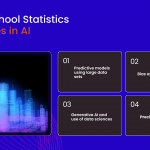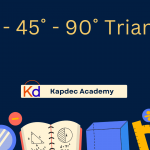AP Physics 2 is more than just understanding physical laws—it demands a solid grip on the underlying mathematics. Unlike AP Physics 1, which emphasizes mechanics, AP Physics 2 covers fluid dynamics, thermodynamics, electricity and magnetism, optics, and modern physics. To excel, students must master the math concepts that directly apply to problem-solving, analysis, and experimental design. Let’s dive into the essential math skills you’ll need to confidently handle the AP Physics 2 exam (1).
1. Algebraic Manipulation and Equations
At the heart of AP Physics 2 is the ability to rearrange and manipulate equations. Whether it’s Ohm’s Law V=IR, Bernoulli’s equation, or thermodynamic identities, students should:
- Solve for unknowns quickly.
- Substitute variables without errors.
- Translate word problems into algebraic form.
Tip: Practice isolating variables in complex formulas since the exam often requires deriving a needed term.
2. Exponents, Roots, and Scientific Notation
Physics problems frequently deal with extremely large or small values, like electron charge or Avogadro’s number. Skills to focus on:
- Converting between standard and scientific notation.
- Simplifying exponents and roots.
- Applying orders of magnitude for approximation.
This is especially useful when analyzing capacitance, resistance, or quantum-level values.
3. Geometry and Trigonometry in Physics Contexts
Many AP Physics 2 topics use geometry and trigonometry, including:
- Optics: Using lens and mirror equations, where similar triangles are essential.
- Waves and Oscillations: Applying sine and cosine functions.
- Electric Fields: Breaking forces into vector components.
Remember: Understanding angle relationships and trigonometric identities is key to solving ray diagrams or wave interference problems.
4. Logarithms and Exponentials
Thermodynamics, nuclear decay, and RC circuits all require a firm grasp of exponential functions.
- Learn how exponential decay works.
- Understand natural logs (ln) when solving time-constant problems in circuits.
- Relate logarithmic scales to real-world concepts, like decibels in sound or pH in chemistry crossover questions.
5. Probability and Statistics
Though not the main focus, statistics is integrated in AP Physics 2 labs and data analysis.
- Analyze error bars and uncertainties.
- Calculate averages and standard deviation.
- Interpret graphs to validate physical models.
Why it matters: The College Board emphasizes experimental design and lab-based reasoning, where statistical thinking is necessary.
6. Calculus Concepts (Optional but Helpful)
AP Physics 2 is designed to be algebra-based, but calculus knowledge gives students an edge (2):
- Understanding rates of change helps in thermodynamics.
- Integrals provide insight into deriving physical quantities like work and electric potential.
- Derivatives explain relationships between current, voltage, and charge in circuits.
Even if calculus isn’t required, familiarity makes complex problems more intuitive.
7. Graph Interpretation and Slope Analysis
Many AP Physics 2 questions involve interpreting graphs:
- Slope of V-I graphs for resistance.
- Area under curves in PV diagrams for thermodynamics.
- Wave intensity and interference patterns.
Being able to connect mathematical meaning (slope = resistance, area = work) to physical reality is a scoring advantage.
FAQs on Must-Know Math Concepts for AP Physics 2
Why is math so important for AP Physics 2?
AP Physics 2 covers thermodynamics, fluid mechanics, optics, electricity & magnetism, and quantum/nuclear physics—all of which rely heavily on mathematical reasoning. Math provides the language to express physical laws, derive equations, and solve real-world problems. Without a strong grasp of algebra, trigonometry, and calculus basics, students often struggle with applying physics principles. For instance, calculating pressure-volume relationships in gases requires algebraic manipulation, while understanding electric fields often involves vector mathematics.
Which areas of algebra are most frequently used in AP Physics 2?
Algebra is the backbone of problem-solving in AP Physics 2. Students often need to:
Rearrange and solve equations for different variables (e.g., Ideal Gas Law PV=nRT).
Use proportional reasoning (e.g., F∝ q in Coulomb’s Law).
Apply logarithmic and exponential relationships (important in nuclear decay problems).
For example, when analyzing half-life in radioactive decay, the exponential law requires algebraic manipulation to find the time or decay constant.
Do I need calculus for AP Physics 2?
Unlike AP Physics C, calculus is not a requirement for AP Physics 2. However, understanding calculus concepts like slope (derivatives) and area under a curve (integrals) can give students an edge. For example, interpreting a pressure-volume diagram involves understanding that the area under the curve represents work done by or on a system. Students who recognize these connections often perform better, especially on free-response questions.
How is trigonometry applied in AP Physics 2?
Trigonometry appears in optics, waves, and vector analysis.
In optics, Snell’s Law directly uses sine functions.
In waves and oscillations, trigonometric functions describe sinusoidal motion (y=Asin(ωt)).
Vector decomposition (e.g., splitting electric field components into perpendicular directions) also depends on sine and cosine.
A solid foundation in right-triangle relationships and the unit circle makes these applications easier.
What role do logarithms and exponentials play in AP Physics 2?
Logarithmic and exponential functions are crucial in areas like:
Nuclear decay: The exponential decay law uses base eee, and solving for half-life often requires natural logarithms.
Capacitor charging and discharging: The equations require exponential and logarithmic manipulation.
Understanding how to take logarithms and interpret exponential curves is essential for answering both conceptual and quantitative questions.
How should I approach graph-based questions in AP Physics 2?
The exam frequently uses graphs to test conceptual understanding. Students should be able to:
Interpret slopes (e.g., slope of a pressure vs. volume curve).
Calculate areas (e.g., work done in thermodynamics from PV graphs).
Recognize curve shapes (exponential, linear, inverse-square).
For example, in electrostatics, plotting electric field vs. distance helps students understand inverse-square laws. Strong graph literacy not only improves problem-solving speed but also boosts performance on free-response questions.
What are the most common math mistakes students make in AP Physics 2?
Some frequent pitfalls include:
Forgetting unit conversions (e.g., Celsius to Kelvin in gas laws).
Incorrectly handling scientific notation or significant figures.
Misapplying trigonometric ratios in vector components.
Mixing up direct and inverse relationships (e.g., mistakenly thinking pressure is directly proportional to volume).
Careful attention to these details often separates high scorers from average performers.
How can I strengthen my math foundation while preparing for AP Physics 2?
Students can improve by:
Practicing algebraic manipulation daily.
Solving past AP Physics 2 free-response questions to see math applications in real contexts.
Reviewing exponential/logarithmic functions and their graphs.
Practicing vector problems, especially in electric fields and forces.
Platforms like Kapdec offer structured tutoring, step-by-step math-based physics problem breakdowns, and personalized practice sessions that can help students solidify these skills.
Final Thought
AP Physics 2 blends conceptual reasoning with practical math. Students who sharpen algebra, trigonometry, logarithms, and statistical analysis will find problem-solving much smoother. While the math may feel challenging at first, consistent practice makes it second nature.
Platforms like Kapdec offer structured problem sets and explanations that directly align with AP Physics 2 curriculum, helping students strengthen their math foundation while staying exam-ready. With the right preparation, mastering AP Physics 2 is not just possible—it’s achievable.







